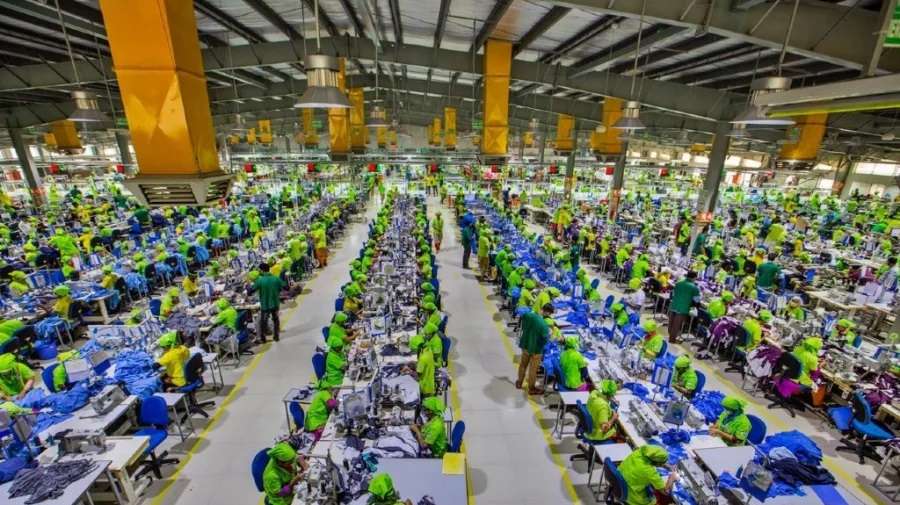"The problem of waste in the fashion industry is getting bigger. Ariel Muller, Asia Pacific Managing Director of non-profit Forum for the Future, recently noted at the Ecosperity conference in Singapore, the fashion industry, which produces around 10 per cent of global carbon emissions is likely to produce over 26 per cent emissions by 2050. The industry loses around $500 billion every year due to clothes that are hardly worn and rarely recycled. Textiles equivalent to one truck of garbage are either landfilled for burned every second."
 The problem of waste in the fashion industry is getting bigger. Ariel Muller, Asia Pacific Managing Director of non-profit Forum for the Future, recently noted at the Ecosperity conference in Singapore, the fashion industry, which produces around 10 per cent of global carbon emissions is likely to produce over 26 per cent emissions by 2050. The industry loses around $500 billion every year due to clothes that are hardly worn and rarely recycled. Textiles equivalent to one truck of garbage are either landfilled for burned every second.
The problem of waste in the fashion industry is getting bigger. Ariel Muller, Asia Pacific Managing Director of non-profit Forum for the Future, recently noted at the Ecosperity conference in Singapore, the fashion industry, which produces around 10 per cent of global carbon emissions is likely to produce over 26 per cent emissions by 2050. The industry loses around $500 billion every year due to clothes that are hardly worn and rarely recycled. Textiles equivalent to one truck of garbage are either landfilled for burned every second.
Harsha Vardhan, H&M’s Global Environment Manager, Production, terms this waste as a missed opportunity that can be exploited for further benefit of the industry. For this, he advises brands to adopt the circular economy model which relies heavily on recycling. However, this could prove as an uphill task as trash is not traditionally seen as treasure and consumers too have an unending thirst for novelty; particularly Asian consumers.
Preferences for new, shiny clothes increases fashion garbage
Edwin Keh, Chief Executive Officer of The Hong Kong Research Institute of Textiles and Apparel (HKRITA) says, Asian consumers have a deep-rooted preference for the new, bright and shiny clothes which needs to be changed. They associate new materials with quality and value. Also, the traditional recycling methods compel them to compromise on looks and feel of the garments which further increasing their aversion to recycling.
Asian consumers have a deep-rooted preference for the new, bright and shiny clothes which needs to be changed. They associate new materials with quality and value. Also, the traditional recycling methods compel them to compromise on looks and feel of the garments which further increasing their aversion to recycling.
For this Arthur Huang, Chief Executive and Founder of upcycling firm Miniwiz, emphasizes that brands need to revamp their recycling methods. Recycling materials and products and even the recycler needs to be seen as sexy. He advises designers to work with the world’s top lifestyle tastemakers who dictate the current trends in the market. Citing the example of his own firm’s collaboration with sportswear firm Nike, Huang informs that Miniwiz not only incorporated recycled materials into the EVA foam midsole and used Nike’s proprietary Flyknit technology—which is more environmentally sustainable than traditional sports footwear manufacturing methods—but also considered the wider ecosystem.
For packaging, Miniwiz introduced an “Air Bag”, made from 100 per cent recycled polypropylene, each the result of recycling 180 disposable coffee cup lids. The structured bags could be stacked, replacing traditional palettes used in the transportation process, and could be arranged into an in-store installation.
Scaling up business models
Huang opines that even if Asian consumers embrace the idea of alternative materials, the industry must make recyclability as its selling point. It should instead scale up its business models as quickly as possible. A case in point is HKRITA which focuses on shorter and less energy intensive recycling methods. The institute aims to recycle fibre to fibre and garment to garment. It uses heat and pressure to separate and reprocess material which ensures less damage to the material, less energy in the reprocessing, and no generation of chemical waste.
One of Miniwiz’s innovations, the Trashpresso mobile recycling machine also encourages more people to recycle their garments. Consisting of a 12-metre container housing a solid-waste processing line, the Trashpresso machine compacts the recycling process into three steps: reducing the size of the plastic waste, purification and reshaping. The result is usable consumer products such as coasters, bowls and cups, in just four minutes.
Miniwiz pairs the latest technology with artificial intelligence (AI) and data to give the scalability. Latest camera technology and a robust materials data bank is used to identify the materials presented for recycling. The machine processes the trash using AI which allows it apply the correct level of heat and pressure. Collaborations like these between brands, designers, manufacturers and scientists helps the industry move towards circular fashion. It now needs to work together to find solutions to this issue of circularity.












